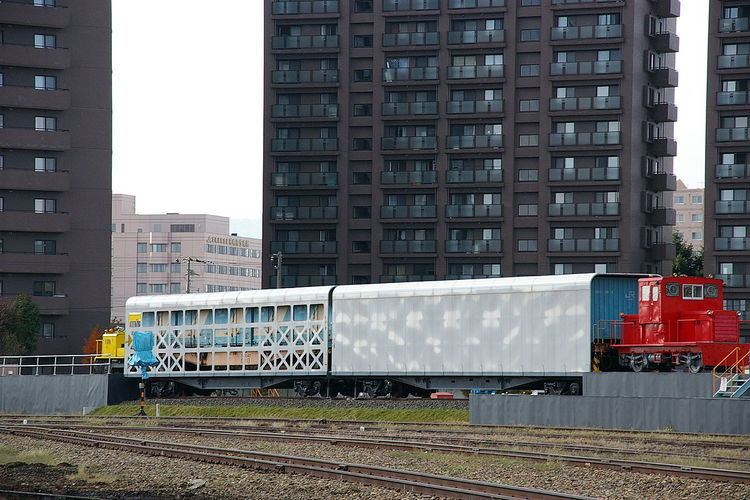 | ||
"Train on Train" (トレイン・オン・トレイン, Torein on Torein) is a concept being developed by Hokkaido Railway Company (JR Hokkaido) in Japan as a means of transporting freight in a manner allowing higher speeds through the undersea Seikan Tunnel for both high-speed passenger services and freight services when the Hokkaido Shinkansen starts using the tunnel in 2016.
Contents
Overview
When the Hokkaido Shinkansen opens between Shin-Aomori and Shin-Hakodate in 2016, high-speed Shinkansen trains will have to share the dual gauge tracks through the 53.85 km (33.46 mi) long Seikan Tunnel linking the main island of Honshu and Hokkaido with freight trains currently limited to 110 km/h (70 mph) on narrow-gauge 1,067 mm (3 ft 6 in) tracks. Shinkansen trains will initially be limited to 140 km/h (85 mph) through the tunnel due to the risk of freight containers being dislodged by the shockwave of air that builds up ahead of Shinkansen trains traveling through tunnels at higher speeds. The "Train on Train" concept involves loading narrow-gauge KoKi 100 container wagons onto specially built standard-gauge wagons, allowing freight trains to be operated through the tunnel at speeds of up to 200 km/h (120 mph).
Development
The "Train on Train" concept was revealed by JR Hokkaido Chairman Shinichi Sakamoto in April 2006. A full-size mockup vehicle was built and demonstrated at Naebo Works in spring 2007, and the next phase of the project is to build a prototype train for actual operation. JR Freight is developing new Class EH800 20/25 kV AC electric locomotives to haul these and other trains through the tunnel.
Addressing local business leaders at a "Forum 2050" meeting in Hokkaido on 1 February 2010, JR Hokkaido vice-president Hirohiko Kakinuma stated that using a "double traverser" arrangement would allow trains to be transferred to and from the Train on Train wagons in approximately 10 minutes.
